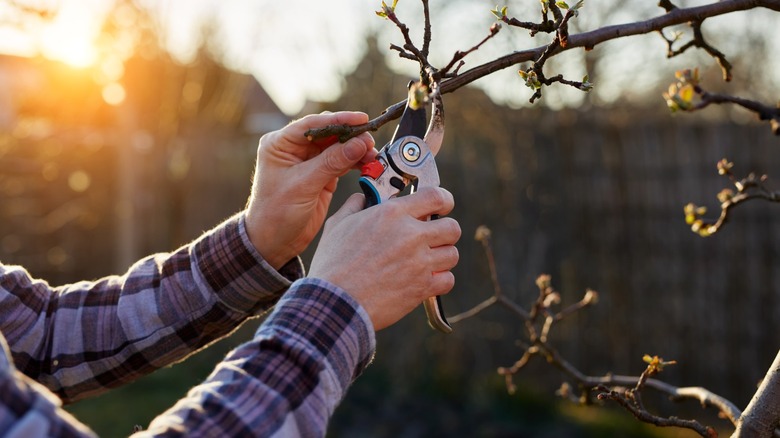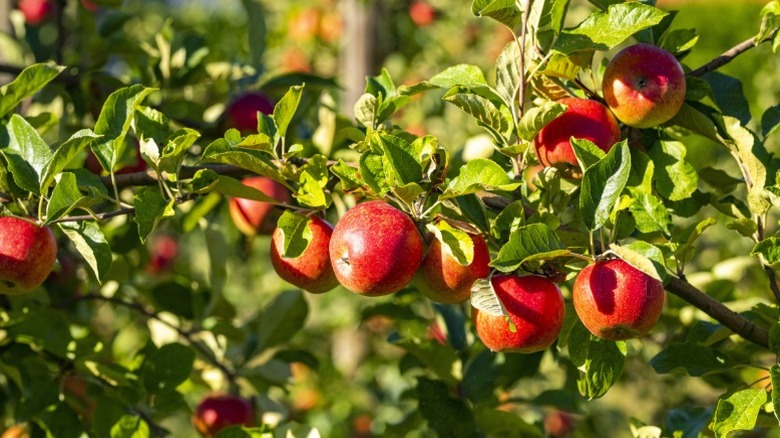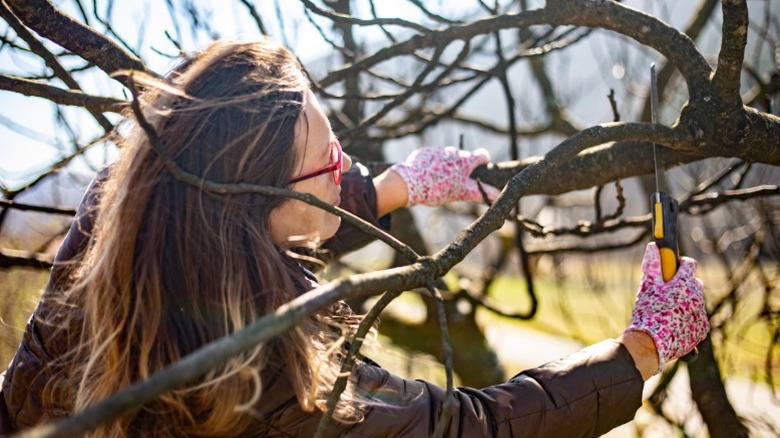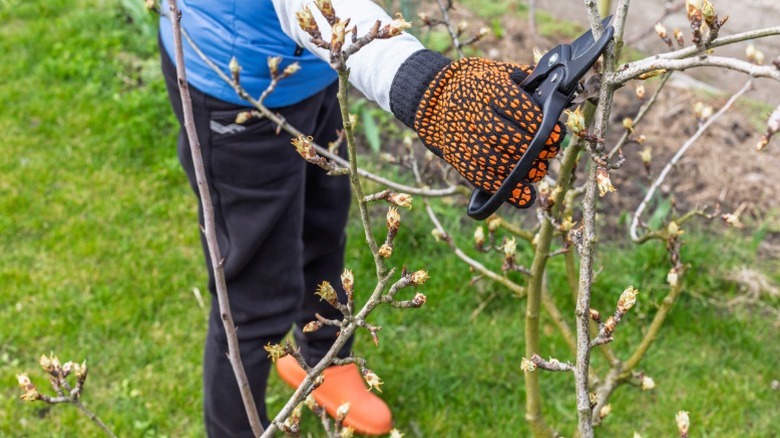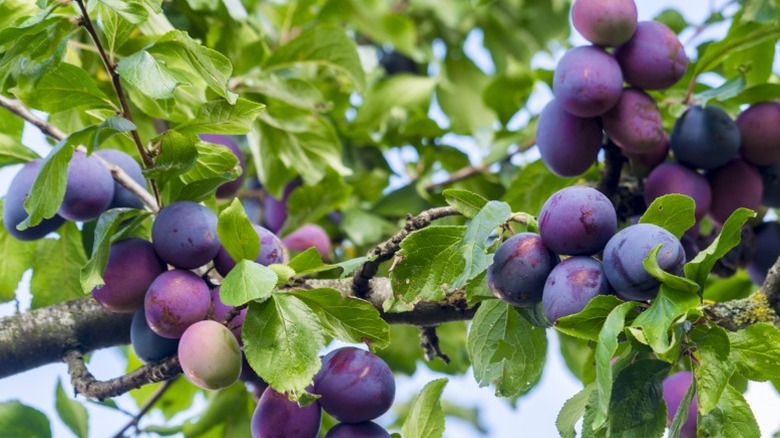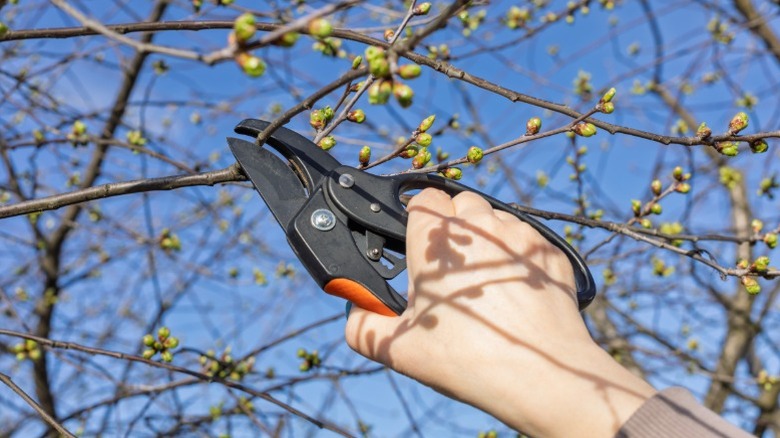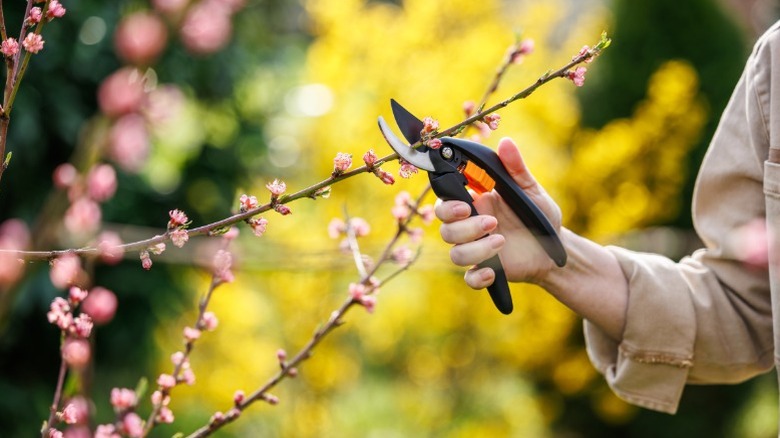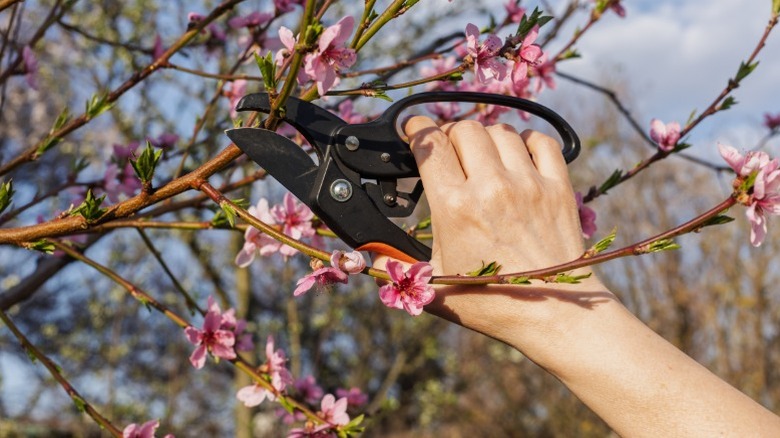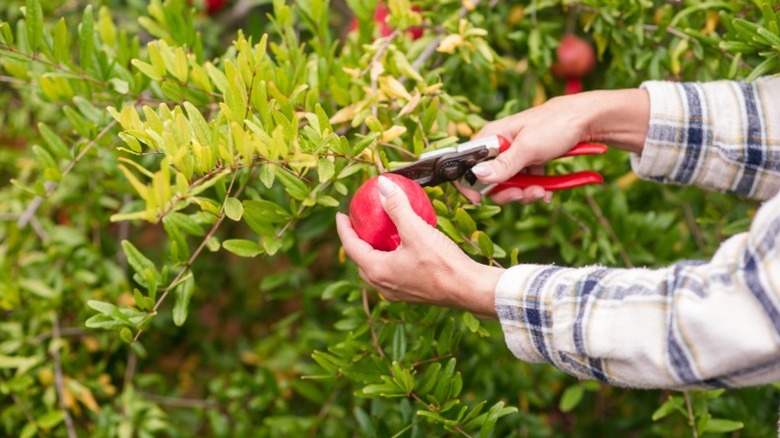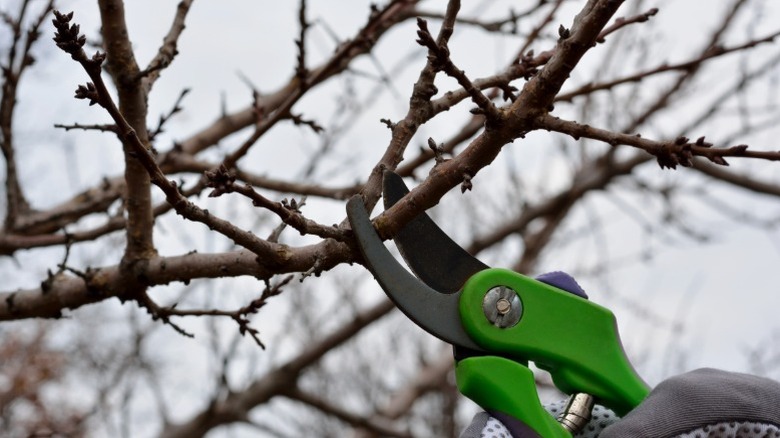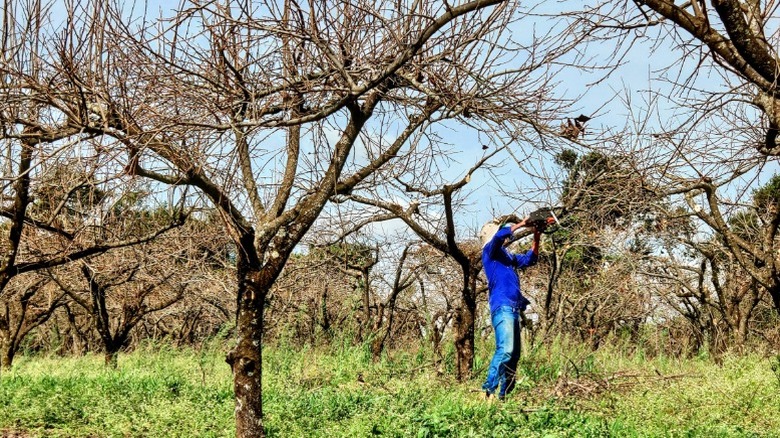Don't Forget To Prune These 10 Types Of Fruit Trees In Early Spring
To encourage excellent fruit production year after year, it's important to prune your fruit trees. A neglected fruit tree can start to grow out of control and provide fruit of poor quality. The best time to prune many fruit trees is early spring, when most trees are still dormant, which will not negatively impact the health of the tree. This period of dormancy is an ideal time for pruning because you do not risk the tree reacting poorly to the winter cold. At the same time, you do not have to navigate dense foliage to determine which branches are old or weathered.
The best time to prune apples, plums, cherries, figs, and other fruit trees is between late February and early April in most parts of the U.S. Just don't make this mistake everyone makes when growing fruit trees and forget to prune your trees regularly. Pruning is necessary to shape fruit trees to maximize production, reduce disease, and grow overall healthy trees.
If you've missed the window in your area for late winter to early spring pruning, some fruit trees can still be pruned. For example, peach trees are very intolerant of frost, which means pruning too late is better than pruning too early and risking damage to the new buds. For trees that have already bloomed, it might be best to wait until the next spring for heavy pruning to avoid stunting growth. Thankfully, you can remove dead, diseased, or broken branches throughout the year to protect your fruit trees, although you should monitor cuts to ensure proper healing.
Apples
If you're trying to decide the best time to prune your apple tree for more fruit, make sure to mark your calendars for early spring. There are thousands of varieties of apple tree cultivars to choose from and all of them benefit from annual pruning to produce the best fruit. After the harvest season ends, apple trees lose their leaves and go into a period of dormancy. But don't prune until the harshest part of winter is long gone or you are inviting damage from frost or ice.
Figs
Fig trees require pruning to manage growth, especially to avoid overcrowding of branches and the growth of too many suckers. Heavy pruning should only be completed during the dormant season, which includes early spring. Most fig trees will still be dormant in April, which makes it an ideal time to break out the choppers. Pruning tasks include getting rid of damaged or dead branches and thinning the overall tree.
Pears
Pear trees require regular pruning to train their growth for effective fruit production. You can approach pruning a pear tree the same way you do an apple tree. Start pruning your tree after planting and continue every year in early spring. The extent of your pruning largely depends on the amount of growth from the summer. Older trees may require heavier pruning to remove older wood.
Plums
The best time to prune a plum tree is spring, if your tree is young. Established plum trees are often pruned in mid-summer to control the vigorous growth of healthy trees. However, during its formative years, early spring will do the trick to encourage robust growth. Follow similar pruning instructions for plums as for apple trees. Japanese plums will require more heavy pruning compared to European plums.
Cherries
There are two types of cherry trees grown in the U.S., sour (tart) and sweet. Both types of cherries should be pruned in early spring to avoid winter injury. The tree should still be dormant at this point. Summer pruning can lead to dwarfing effects on trees. An established cherry tree will not require a lot of pruning each year, due to its spurs that produce fruit for 10 to 12 years at a time. The main pruning task is to thin out branches that might be dead, diseased, or overgrown.
Peaches
Peach trees tolerate summer pruning, which is commonly used as a method to reduce shade for improved fruit quality. However, too much summer pruning can stunt the growth of younger trees. The best time to limit the size of a peach tree or thin out vigorous shoots is early spring during its dormant period. Early spring, when buds have not yet bloomed, is ideal as long as there is no chance of messing with the fruit ripening process. Err on the side of caution and never prune your peach trees too early in the late winter.
Nectarines
Nectarines are similar to peaches, as both are stone fruit trees and bear fruit on wood that has one year of growth. Also similar to peach trees, nectarines are best pruned in early spring. There are some fruit tree pruning mistakes to avoid at all costs, like deciding to prune in early winter, which increases the risk of serious infections. This type of fruit tree usually will need lots of pruning to help manage their size.
Pomegranates
Pomegranates tend to require more pruning maintenance when they are young to train them into a proper tree-like structure. Lighter pruning is needed for young trees, but a heavier hand can be beneficial for older trees to encourage fruit production. For young trees, plan to cut back some growth while the tree is dormant before it blooms in the spring. Continue pruning during the dormant season after the last spring frost every year.
Apricots
In the case of apricots, make sure to prune young trees that have been recently planted in early spring. Shoots growing on the inside of the tree can be trimmed out from older, established plants in the summer months without problems. But, pruning in early spring is a better option to avoid serious infections, including from the bacterial canker organism.
Persimmons
As one of the most affordable tree species that won't break the bank, persimmon trees provide tasty fruit with fairly low maintenance requirements. Pruning a persimmon tree is not complicated and should be done in early spring while the tree is still dormant and the sap is not flowing. To train this type of fruit tree, focus on creating an open vase shape with sturdy main branches that can easily produce many fruits.
